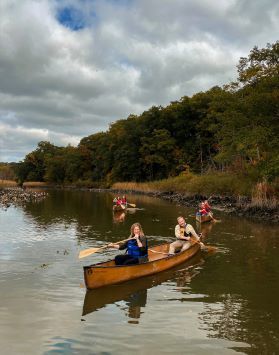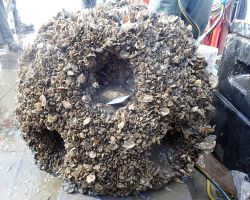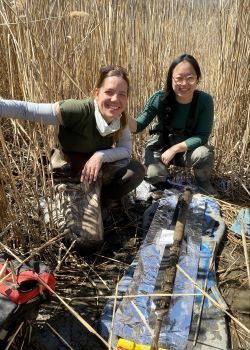Restoring the Habitats of the Hudson River Estuary
The New York State Department of Environmental Conservation sent this bulletin on 11/16/2021 09:52 AM EST |
| DEC Delivers - Information to keep you connected and informed from the NYS Department of Environmental Conservation |
| Share or view as a web page || Update preferences or unsubscribe |
Hudson RiverNet
|
In This Issue
2021 Highlights of River Habitat Restoration
Last week, DEC and the Hudson River National Estuarine Research Reserve (HRNERR) launched the Hudson River Aquatic Invasive Species Task Force. The task force will facilitate communication about the invasive species work coordinated by DEC, New York State Parks, Partnerships for Regional Invasive Species Management (PRISMs), and other entities. With a collaborative vision for invasive species control on the Hudson River, the task force will develop priorities for monitoring, management, and early detection/rapid response. HRNERR continues to annually treat invasive species phragmites in tidal wetland marshes, including 1 ½ acres at Tivoli Bays in 2021. Throughout the year, DEC's Estuary Program staff assessed 35 shoreline sites along the tidal Hudson to prioritize future restoration of shallow water habitat, critical to fresh water and migratory species. The oyster habitat enhancement final report was published in 2021 and informs the oyster working group for future oyster restoration priorities. Read more about this work below. Restoring Oyster Habitat in the Tappan Zee
Research Supports the Resilience of the Estuary's Natural Resources
Mapping of Tidal Wetlands Guides Scientific Management and StewardshipHabitat maps help guide science, management, and stewardship in Hudson River waters and along its shores. We make dozens of free GIS data sets and mapping products available to researchers, managers, and members of the public to advance science and stewardship of the Hudson River and its habitats. Tidal wetland maps of the four HRNERR sites (Piermont Marsh, Iona Island, Tivoli Bays, and Stockport Flats) document 20 vegetation categories in 1991, 1997, and 2005. They were designed to document existing plant communities and analyze changes in this composition and distribution over time. In 2007, an aerial photo inventory for the entire Hudson River Estuary was used to produce tidal wetland maps from Troy to Hastings-on-Hudson. The goal was to assist in the review of river development plans by providing a comprehensive atlas of potential impact areas. Currently, 2018 aerial photos are being used to update both the HRNERR tidal wetland maps (completed in 2021) and the whole Hudson River Estuary Tidal Wetland maps (to be completed in 2022).
|

 To track progress in achieving long-term changes that ensure a healthy and thriving estuary ecosystem, the
To track progress in achieving long-term changes that ensure a healthy and thriving estuary ecosystem, the  In 2018, HRNERR worked with the New York State Thruway Authority to create more than
In 2018, HRNERR worked with the New York State Thruway Authority to create more than  The Hudson River Estuary is changing. In tributaries, down the main stem, and along tidal wetlands that stretch to the Atlantic, climate change and other drivers are reshaping the region’s intertidal areas. Together with our partners, HRNERR identified
The Hudson River Estuary is changing. In tributaries, down the main stem, and along tidal wetlands that stretch to the Atlantic, climate change and other drivers are reshaping the region’s intertidal areas. Together with our partners, HRNERR identified 